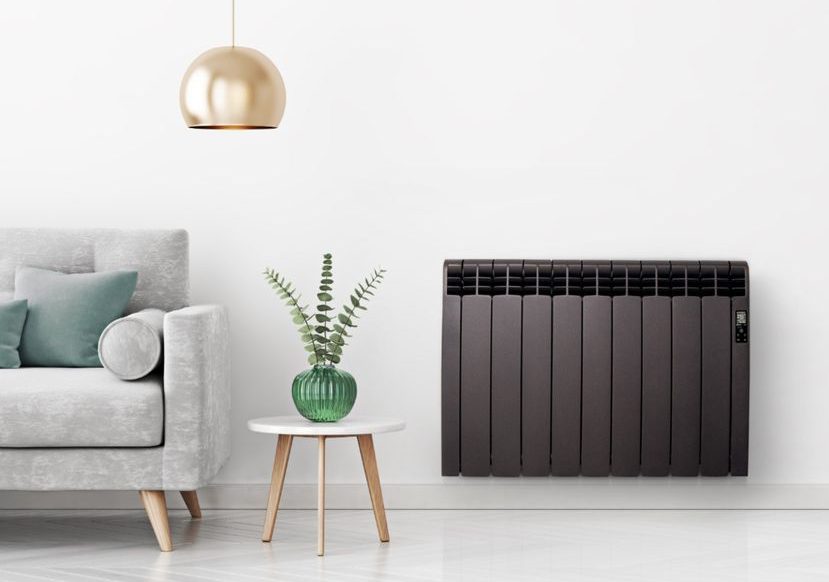
Electric radiators are a type of heating system that are fixed to the wall. They work by connecting to the electricity grid through your power sockets. They are generally made of aluminium, as it has a very high heat transmission factor.
The question is… How does an electric radiator heat a room? Heat is the transfer of kinetic energy from one medium or object to another, or from an energy source to a medium or object. This transfer of energy can occur in three ways: conduction, convection and radiation.
By conduction
Takes place when two material media or objects are in direct contact, and the temperature of one is higher than the other. It transfers thermal energy between the two objects.
By convection
Convection occurs through a fluid (air, water, etc.) that transports heat between areas with different temperatures. This phenomenon can only occur in fluids whose particles can move, either by natural movement (natural convection) or by forced circulation (with the help of fans, pumps, etc).
By radiation
Energy, in the form of electromagnetic radiation, is emitted by a heated surface in all directions and travels directly to the point of absorption. The heat can only travel in a straight line until it meets an absorbing surface.
Types of electric radiators
Currently, there are three types of electric heaters on the market: ceramic, dry and thermal fluid, such as these https://rointe.com/uk/d-series-wifi-radiators/.
The difference lies in their speed in reaching the maximum temperature, which depends on the concept of thermal inertia, that is, the time they are capable of maintaining the accumulated heat and this, we can see in the following graph:
Thermal fluid radiator
Thermal fluid radiators have an internal fluid that circulates through the heater and heats up evenly, similar to the oil radiator but more effective. They transmit the heat by a combination of convection in the room and radiation from the heater itself, like a water radiator.
Thermal fluid heaters are intermediate models between dry and ceramic heaters because of their thermal inertia, since they keep the heat for up to about 4 hours.
They are great for installing in homes or large rooms.
The fluid radiator is ideal for continuous use in the home, between 5 and 8 hours a day of operation.
Dry electric radiator
Dry heaters have a low thermal inertia, i.e. the heating element heats up the radiator elements very quickly (1 hour) but also cools down very quickly.
It is recommended for rooms that need to be heated quickly and warm areas with little cold.
They are less effective in maintaining heat over time and also heat the air by convection. They are the cheapest models we can find in the shops.
Electric ceramic radiator
They are composed of a ceramic element to accumulate heat. The ceramic thermal emitters are the ones that later reach the maximum temperature, but, due to their high thermal inertia, are the ones that keep the heat for longer.
They are recommended for any type of installation and for a continuous use of more than 8 hours.


Leave a Reply